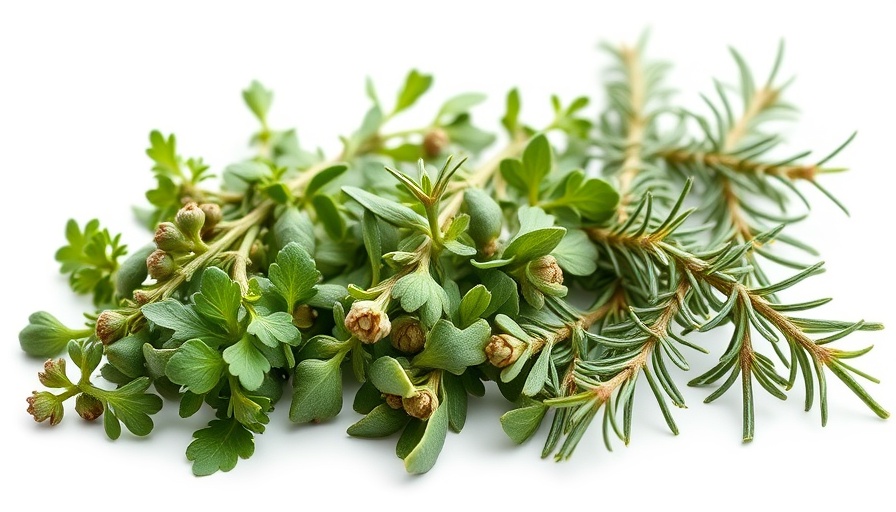
Unlocking the Secrets: Why Propagating Herbs Is a Must for Every Gardener
For many, the aroma of fresh herbs fills the kitchen with warmth and flavor, transforming ordinary meals into culinary experiences. While houseplants are often propagated by gardening enthusiasts, the art of herb propagation remains a hidden gem. By embracing the practice of propagating herbs, you not only expand your garden but also bring life to your kitchen, enhance your cooking, and share delightful gifts with friends and family.
Understanding Plant Propagation: A Quick Guide
At its core, propagation is the process of creating new plants from existing ones. For herbs, this can be achieved through several methods, though stem cuttings stand out due to their simplicity and speed. Other methods, such as seeds and divisions, also work but may require more time and patience. As you venture into the world of herb propagation, you’ll discover that the possibilities are endless.
The Ideal Time for Propagation: When Is It Best?
The timing of your propagation efforts can greatly influence your success. The active growth season, typically from spring through fall, is the best period for taking cuttings. During this time, plants are eager to grow, offering the best chance for root development. If you see flowers on your herbs, it’s advisable to remove them before making cuts, as this will divert energy away from root growth.
Preparing to Cut: Choosing the Right Parts of the Plant
When preparing for herb propagation, knowing where to cut is crucial. Each stem comprises two distinct sections: the softwood and the hardwood. The softwood section, characterized by its flexibility and lighter color, is ideal for cuttings. To maximize your success rate, cut stems in the morning when they are less stressed and ensure to disinfect your tools to avoid potential diseases. A piece measuring about 4-6 inches in length, cut just below a node, will serve as a perfect candidate for propagation.
Rooting Your Cuttings: Two Effective Methods
Once you’ve prepared your cuttings, rooting them can be done using two methods: in water or directly into a growing medium. Both approaches come with their benefits:
- Water Method: Place your cuttings in a glass of water ensuring that no leaves touch the water. A plastic bag can be used as a mini greenhouse. After about 3-4 weeks, watch for roots to develop. When they grow to about 1 cm, they can be potted in soil.
- Growing Medium Method: Alternatively, cuttings can be planted directly into a soilless growing medium. Adding a rooting hormone can boost root development, setting your herbs on the path to thriving.
Aftercare: Nurturing Your New Plants to Success
While the plant initiation is crucial, providing the right aftercare is equally imperative for your newly propagated herbs. Make sure to keep the cuttings in a well-lit area but avoid direct sunlight which can scorch them. Regularly check the moisture levels, maintaining a delicate balance that encourages growth without drowning the roots. With patience and proper care, your efforts will soon result in lush, vibrant herbs ready to spice up your life.
Creative Herb Projects to Try With Your New Plants
The joy of gardening doesn't end with propagation. As your herbs flourish, consider embarking on exciting projects that celebrate your green thumb. Create an indoor herb garden, make herbal teas, or start a cooking club where friends can share recipes made with your home-grown herbs. These projects bring communities closer, fostering connections over shared meals and experiences. Not only will you enjoy the benefits of your labor, but you'll create deeper bonds with those around you.
Conclusion: Embrace the Joy of Herb Propagation
As we journey through the seasons, the ability to propagate herbs offers more than just a way to expand your garden. It enhances our lives through connection, creativity, and the simple joy of nurturing plants. Whether you're an experienced gardener or just starting, propagating herbs through stem cuttings is a rewarding endeavor that encourages us to appreciate the bounty of nature while enhancing our culinary experiences at home.
Ready to get started? Gather your tools, select your herbs, and join the thriving community of gardeners who celebrate the beauty of propagation!
 Add Row
Add Row  Add
Add 




Write A Comment